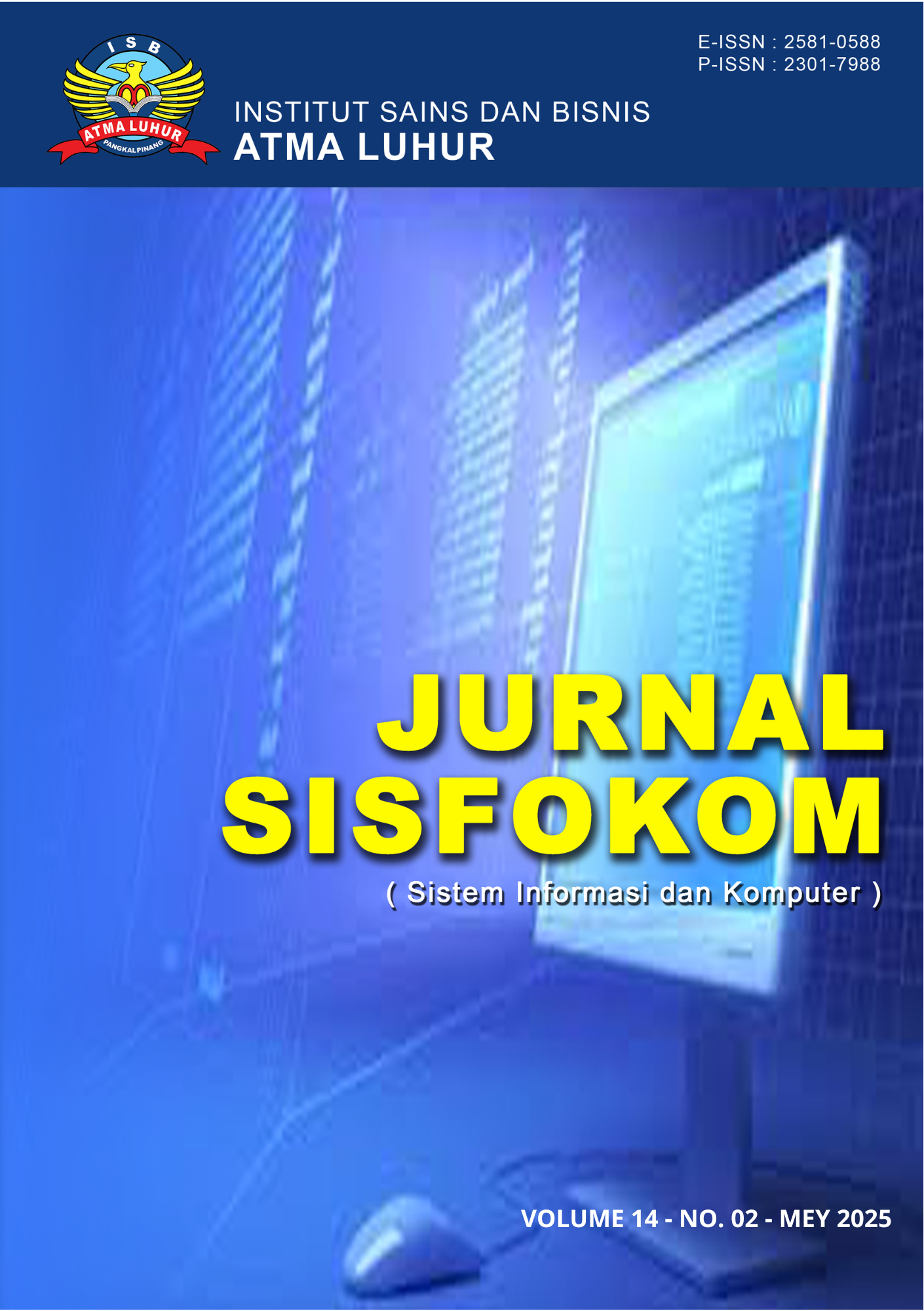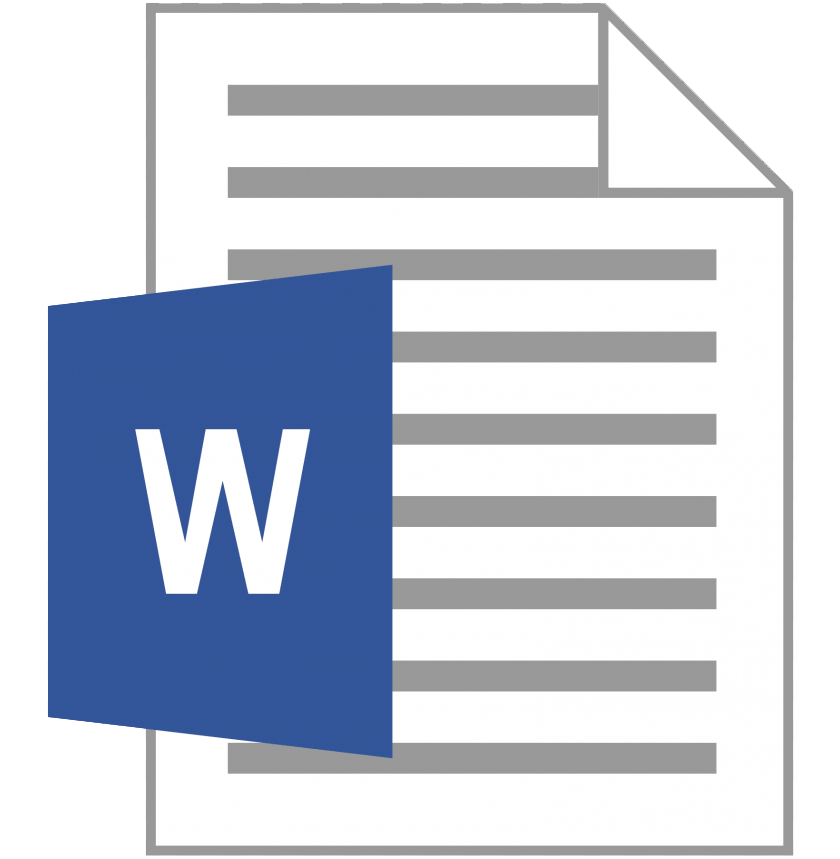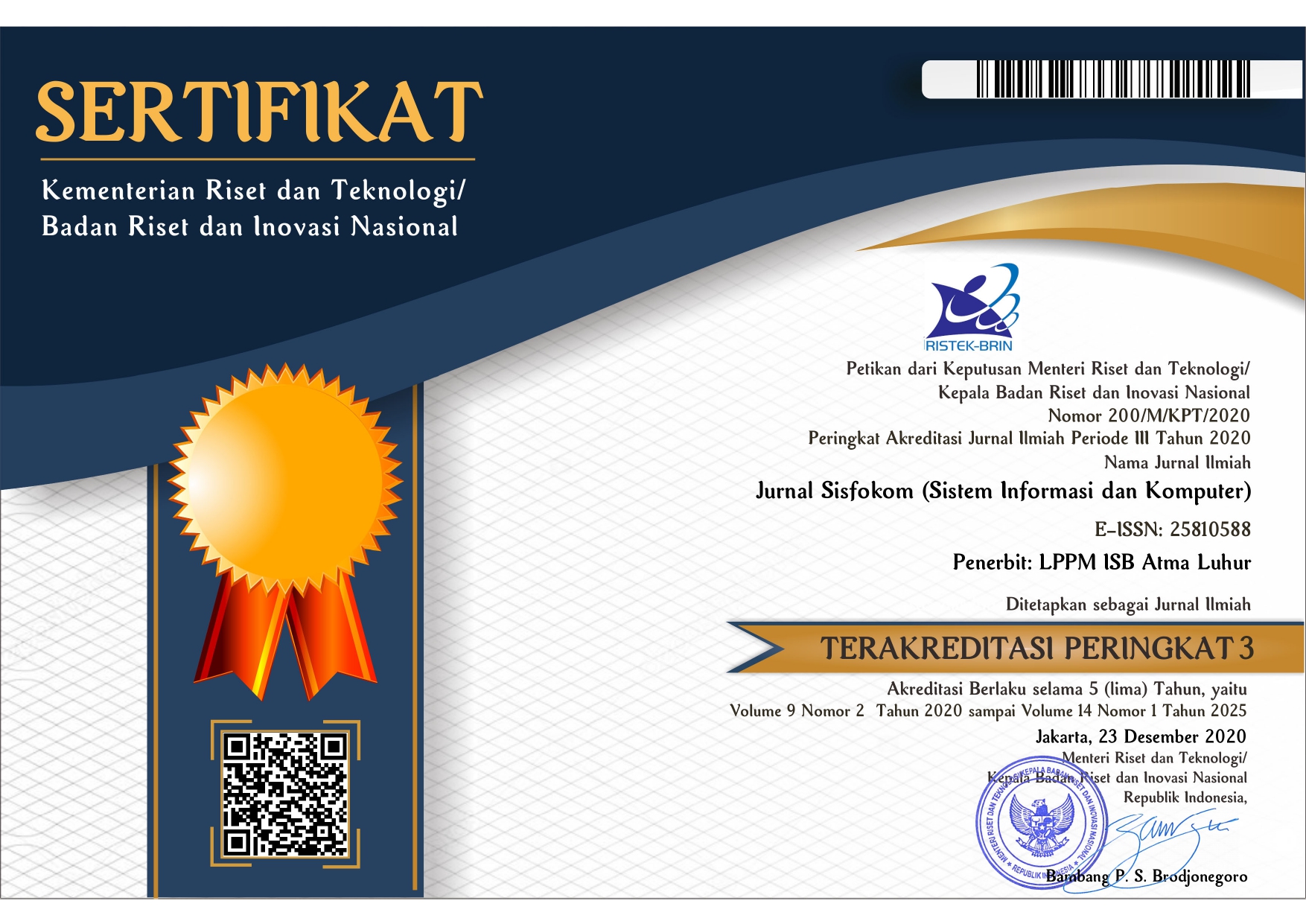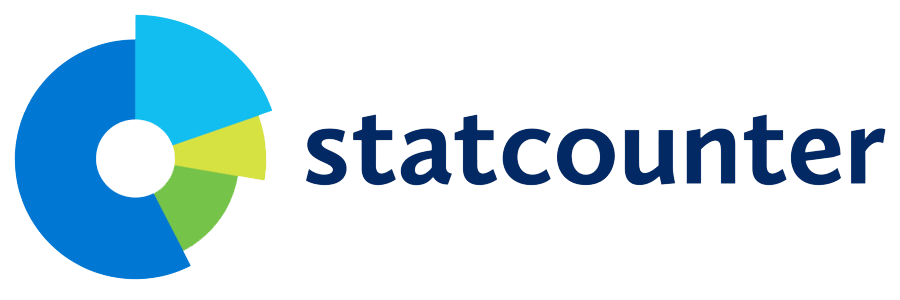The Influence of Social Media on Student Learning Behavior and Its Effects on Academic Achievement
DOI:
https://doi.org/10.32736/sisfokom.v14i2.2344Keywords:
learning behavior, social media, academic performance, ISB Atma Luhur, digital eraAbstract
The advancement of digital technology, particularly social media, has significantly transformed students’ learning behavior. The rapid digital transformation has significantly reshaped higher education, particularly in how students engage with academic content. This study aims to examine how social media usage influences students' learning behavior and its impact on academic performance, using a case study at the Institute of Science and Business (ISB) Atma Luhur. A descriptive quantitative approach was adopted, involving 150 students from various study programs. Data was collected through an online questionnaire covering the frequency of social media usage, types of learning activities conducted via social platforms, and students’ Grade Point Averages (GPA). The results reveal a significant shift in students' learning patterns, where platforms like WhatsApp, YouTube, and Instagram are utilized for sharing materials, group discussions, and seeking references. However, uncontrolled use negatively affects concentration and time management. Regression analysis shows a moderate positive correlation between academic-oriented social media use and improved performance, while excessive non-academic use correlates negatively with achievement. These findings highlight the importance of digital literacy and time management in optimizing the educational benefits of social media. The study recommends institutional policies that promote productive social media use and digital learning skill development among students. The results of this study obtained an R value of 0.456. This shows that 45.6% has an influence on the use of social media on student learning behavior and its impact on academic achievement, the remaining 54.4% is influenced by other factors not included in this research model.References
A. M. Kaplan and M. Haenlein, “Users of the world, unite! The challenges and opportunities of Social Media,” Bus. Horiz., vol. 53, no. 1, pp. 59–68, 2010, doi: 10.1016/j.bushor.2009.09.003.
A. Siwi, F. Utami, and N. Baiti, “Pengaruh Media Sosial Terhadap Perilaku Cyber Bullying,” Cakrawala-Jurnal Hum., vol. 18, no. 2, pp. 257–262, 2018, [Online]. Available: http://ejournal.bsi.ac.id/ejurnal/index.php/cakrawala%0APengaruh.
R. Munawwarah, S. H. Hasibuan, D. Y. Lesmana, and S. Manik, “Studi Kasus: Penggunaan Media Sosial sebagai Sarana Pembelajaran di Perguruan Tinggi Fakultas Ilmu Tarbiyah dan Keguruan UIN SU.,” J. Penelitian, Pendidik. dan Pengajaran JPPP, vol. 4, no. 2, pp. 103–107, 2023, doi: 10.30596/jppp.v4i2.15344.
S. Sofiyah, “Hubungan Media Sosial Tik Tok Dengan Prestasi Belajar Peserta Didik Kelas V MI Raudlatul Islam Ketanggungan,” Skripsi, 2024.
E. Susanti, K. Indrajaya, and S. Darlan, “Pemanfaatan media sosial Whatsapp sebagai sarana pembelajaran di PKBM Luthfillah,” J. Environ. Manag., vol. 3, no. 3, pp. 177–185, 2022, doi: 10.37304/jem.v3i3.5523.
G.- Saleh and R. Pitriani, “Pengaruh Media Sosial Instagram dan WhatsApp Terhadap Pembentukan Budaya ‘Alone Together,’” J. Komun., vol. 10, no. 2, p. 103, 2018, doi: 10.24912/jk.v10i2.2673.
P. Singarimbun, “Pengaruh Penggunaan Media Sosial dalam Proses Pembelajaran di Sekolah,” Cognoscere J. Komun. dan Media Pendidik., vol. 1, no. 1, pp. 1–6, 2023, doi: 10.61292/cognoscere.v1i1.19.
Hamidah, O. Rizan, D. Wahyuningsih, H. A. Pradana, and S. Ramadella, “SAW Method in Supporting the Process of Admission of New Junior High School Students,” 2020 8th Int. Conf. Cyber IT Serv. Manag. CITSM 2020, 2020, doi: 10.1109/CITSM50537.2020.9268874.
E. D. Pitaloka, M. Aprilizdihar, and S. Dewi, “Pemanfaatan Sosial Media dalam Pembelajaran,” J. Digit. Educ. Commun. Arts, vol. 5, no. 1, pp. 40–49, 2022, [Online]. Available: https://jurnal.polibatam.ac.id/index.php/DECA/article/view/3717.
H. Hamidah, “Sistem Pendukung Keputusan Pemilihan Kepala Biro Menggunakan Metode Simple Additive Weighting (SAW),” sisfokom, vol. 10, no. 3, pp. 413–418, 2021, [Online]. Available: http://jurnal.atmaluhur.ac.id/index.php/sisfokom/article/view/1297/784.
S. Rabaani and D. Indriyani, “Pengaruh Penggunaan Media Sosial terhadap Prestasi Akademik Mahasiswa,” Pubmedia J. Penelit. Tindakan Kelas Indones., vol. 1, no. 3, p. 10, 2024, doi: 10.47134/ptk.v1i3.433.
B. V. Esther, A. A. . Tucunan, and A. . Rumayar, “Hubungan Penggunaan Media Sosial dengan Prestasi Akademik Pelajaran Kelas XI di SMA Negri 9 Manado,” J. KESMAS, vol. 7, no. 4, p. 7, 2013.
Yulisa Andriyani, “Skripsi Pengaruh Pengunaan Media Pembelajaran Terhadap Hasil Belajar Siswa,” 2017.
Hamidah and O. Rizan, “Pemilihan Calon Ketua Badan Eksekutif Mahasiswa Dengan Menerapkan FMADM (Fuzzy Multiple Attribute Decision Making),” Telematika, vol. 10, no. 1, pp. 75–90, 2017, [Online]. Available: http://ejournal.amikompurwokerto.ac.id/index.php/telematika/article/view/488.
O. Rizan, K. Pangkalpinang, J. S. Informasi, P. Kepulauan, B. Belitung, and P. Berprestasi, “Pemilihan Pendidik Berprestasi Taman Kanak-Kanak Menggunakan Metode SAW dan Topsis,” vol. 8, no. 2, pp. 549–560, 2022.
N. F. A. Maulidiyah, D. Singasatia, and M. A. Sunandar, “Analisis Pengaruh User Experience Terhadap Kepuasan Pengguna Mobile Application VLive Menggunakan Model SCSI,” MALCOM Indones. J. Mach. Learn. Comput. Sci., vol. 2, no. 2, pp. 28–34, 2022, doi: 10.57152/malcom.v2i2.398.
M. P. I. Antonov, F. Z. Hassan, and N. Nurisnaini, “Pengaruh Mobile Banking Terhadap Kepuasan Nasabah,” J. Inform. Kesatuan, vol. 2, no. 2, pp. 189–198, 2022, doi: 10.37641/jikes.v2i2.1458.
T. Mianto, D. Prasetiyo, and H. Utomo, “Pengaruh Ekonomi Digital Platform Digital dan Pemasaran Digital Terhadap Tingkat Pendapatan UMKM Go Online di Kota Kediri The Impact of Digital Economy Digital Platform and Digital Marketing to Increasing Go Online MSMEs Revenue in Kediri,” J. Ilmu Ekon. dan Stud. Pembang., vol. 23, no. 1, pp. 129–145, 2023.
R. L. Hasanah and F. Djamal, “Pengaruh Kualitas Aplikasi DIGI by Bank BJB Terhadap Kepuasan Pengguna Menggunakan Metode Webqual 4.0,” JIKO (Jurnal Inform. dan Komputer), vol. 8, no. 1, p. 127, 2024, doi: 10.26798/jiko.v8i1.976.
D. Patmalasari and A. D. Indriyanti, “Analisis Kepuasan Pengguna Layanan Aplikasi MyTelkomsel dengan Menggunakan Model UTAUT,” J. Emerg. Inf. Syst. Bus. Intell., vol. 02, no. 02, pp. 37–45, 2021, [Online]. Available: https://ejournal.unesa.ac.id/index.php/JEISBI/article/view/39559/34526.
O. Rizan, “Penerapan Metode SAW ( Simple Additive Weighting ) dalam Pemilihan Dosen Favorit Berbasis Web,” pp. 8–9, 2018.
H. Hengki, O. Rizan, B. Isnanto, H. Hamidah, and ..., “Optimasi Pemilihan Model Pembelajaran Berbasis SCL Menggunakan Saw Method Pada Perguruan Tinggi XYZ,” Jutis (Jurnal Tek. …, vol. 7, no. 1, pp. 22–28, 2020, [Online]. Available: http://ejournal.unis.ac.id/index.php/jutis/article/view/143.
Gede Purnawinadi et al., Analisis Data Kuantitatif Menggunakan Program SPSS. 2023.
D. Wahyuningsih, H. Hamidah, A. Anisah, D. Irawan, O. Rizan, and C. Kirana, “Seleksi Peserta Didik Baru Dengan Metode Additive Ratio Assessment (ARAS),” J. Sisfokom (Sistem Inf. dan Komputer), vol. 11, no. 1, pp. 120–126, 2022, doi: 10.32736/sisfokom.v11i1.1381.
E. Istianah and W. Yustanti, “Analisis Kepuasan Pengguna pada Aplikasi Jenius dengan Menggunakan Metode EUCS (End-User Computing Satisfaction) berdasarkan Perspektif Pengguna,” J. Emerg. Inf. Syst. Bus. Intell., vol. 3, no. 4, pp. 36–44, 2022, [Online]. Available: https://ejournal.unesa.ac.id/index.php/JEISBI/article/view/47882.
Downloads
Published
Issue
Section
License

This work is licensed under a Creative Commons Attribution 4.0 International License.
The copyright of the article that accepted for publication shall be assigned to Jurnal Sisfokom (Sistem Informasi dan Komputer) and LPPM ISB Atma Luhur as the publisher of the journal. Copyright includes the right to reproduce and deliver the article in all form and media, including reprints, photographs, microfilms, and any other similar reproductions, as well as translations.
Jurnal Sisfokom (Sistem Informasi dan Komputer), LPPM ISB Atma Luhur, and the Editors make every effort to ensure that no wrong or misleading data, opinions or statements be published in the journal. In any way, the contents of the articles and advertisements published in Jurnal Sisfokom (Sistem Informasi dan Komputer) are the sole and exclusive responsibility of their respective authors.
Jurnal Sisfokom (Sistem Informasi dan Komputer) has full publishing rights to the published articles. Authors are allowed to distribute articles that have been published by sharing the link or DOI of the article. Authors are allowed to use their articles for legal purposes deemed necessary without the written permission of the journal with the initial publication notification from the Jurnal Sisfokom (Sistem Informasi dan Komputer).
The Copyright Transfer Form can be downloaded [Copyright Transfer Form Jurnal Sisfokom (Sistem Informasi dan Komputer).
This agreement is to be signed by at least one of the authors who have obtained the assent of the co-author(s). After submission of this agreement signed by the corresponding author, changes of authorship or in the order of the authors listed will not be accepted. The copyright form should be signed originally, and send it to the Editorial in the form of scanned document to sisfokom@atmaluhur.ac.id.









